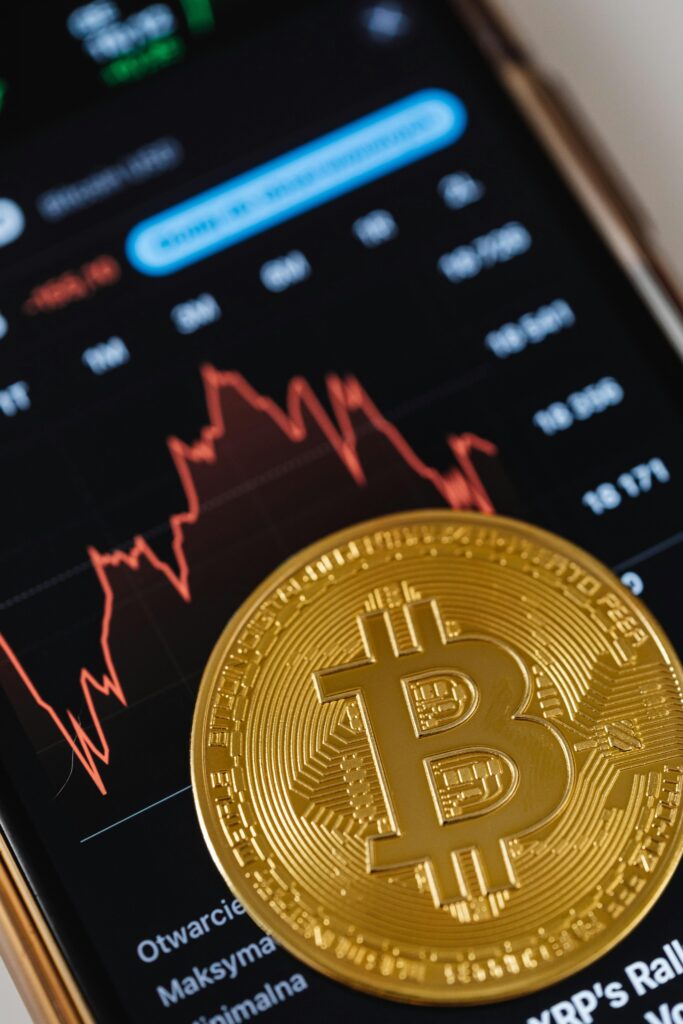
Step 1: Learn the BasicsBefore jumping in, it’s crucial to educate yourself. Understanding these fundamental concepts will help protect you from scams and mistakes:Wallets: Digital tools to store your Bitcoin.Public and Private Keys: Like a username and password for your Bitcoin. The public key is your Bitcoin address, and the private key gives access to your funds.Blockchain: A distributed ledger that records all transactions.Mining: The process of validating transactions (not necessary to start using Bitcoin).Volatility: Bitcoin prices can change rapidly.There are plenty of free resources, videos, podcasts, and books (like The Bitcoin Standard by Saifedean Ammous) that can deepen your understanding.—
Step 2: Choose a Bitcoin WalletTo use Bitcoin, you need a wallet. This is software or hardware that stores your private keys.Types of Wallets:1. Software Wallets:Mobile (e.g., BlueWallet, Trust Wallet)Desktop (e.g., Electrum)Web-based (e.g., Blockchain.com)Easy to use, good for small amounts or beginners.2. Hardware Wallets:Physical devices (e.g., Ledger Nano S/X, Trezor)Most secure option, ideal for long-term storage of large amounts.3. Custodial Wallets:Offered by exchanges like Coinbase, Binance, etc.Easy to set up, but they control your private keys (less secure).> Tip: For security, start with a software wallet and move to a hardware wallet once you have a significant amount of Bitcoin.—
Step 3: Buy BitcoinOnce your wallet is ready, you need to buy Bitcoin. You can buy Bitcoin using:Cryptocurrency Exchanges:These platforms allow you to buy Bitcoin using your local currency.Popular options:Coinbase (USA, UK, EU)BinanceKrakenGeminiBitstampSteps:1. Sign up for an account.2. Complete identity verification (KYC).3. Add a payment method (bank account, credit card).4. Place an order and buy Bitcoin.> Note: Exchanges charge fees—compare them before choosing.Peer-to-Peer (P2P) Platforms:Buy directly from individuals.Platforms: LocalBitcoins, Paxful, BisqOffers privacy but requires caution and trust.Bitcoin ATMs:Machines that allow you to buy Bitcoin with cash.Found in major cities but usually charge higher fees.—
Step 4: Transfer Bitcoin to Your WalletIf you purchased Bitcoin on an exchange, it’s best to move it to your personal wallet (especially if you plan to hold it for a long time). Here’s how:1. Open your wallet and find your receive address (a string of letters and numbers).2. Copy this address.3. On the exchange, go to “Withdraw” or “Send Bitcoin.”4. Paste your wallet address and choose the amount.5. Confirm the transaction.Within minutes to an hour (depending on the network), your Bitcoin will appear in your wallet.> Reminder: Always double-check the address before sending.—
Step 5: Keep It SafeYour Bitcoin is only as secure as your private key. If you lose your private key or someone steals it, you lose access to your Bitcoin.Best Practices:Back up your wallet: Save your recovery phrase (usually 12 or 24 words) securely.Use hardware wallets for large amounts.Enable 2FA (two-factor authentication) on exchanges and apps.Never share your private key or seed phrase with anyone.—
Step 6: Use Your BitcoinBitcoin isn’t just for holding—it can be used in real life.What You Can Do:Spend it: Many retailers and websites accept Bitcoin (e.g., Overstock, Newegg, Shopify stores).Send it: Send money internationally without banks or high fees.Invest or trade: Hold for long-term gains or trade for profit (be cautious).Donate: Many charities accept Bitcoin.Earn it: Some jobs, freelance platforms, and websites pay in Bitcoin.You can also use Bitcoin with tools like:BitPay or Strike (for payments)Bitcoin Lightning Network (for fast, cheap microtransactions)—
Step 7: Understand the RisksBitcoin can be empowering, but it’s not without risks:Volatility: Prices can swing dramatically.Security: You are responsible for your funds.Regulations: Crypto laws vary by country—check local rules.Scams: Avoid offers that promise guaranteed returns or free Bitcoin.> Rule of thumb: Never invest more than you can afford to lose.—
Step 8: Stay UpdatedBitcoin evolves constantly. Staying informed helps you make better decisions.Follow:News sites: CoinDesk, Bitcoin MagazineCommunities: Reddit (/r/Bitcoin), Twitter (Crypto influencers)Podcasts: What Bitcoin Did, Stephan LiveraLearning is a continuous process in the world of crypto.


